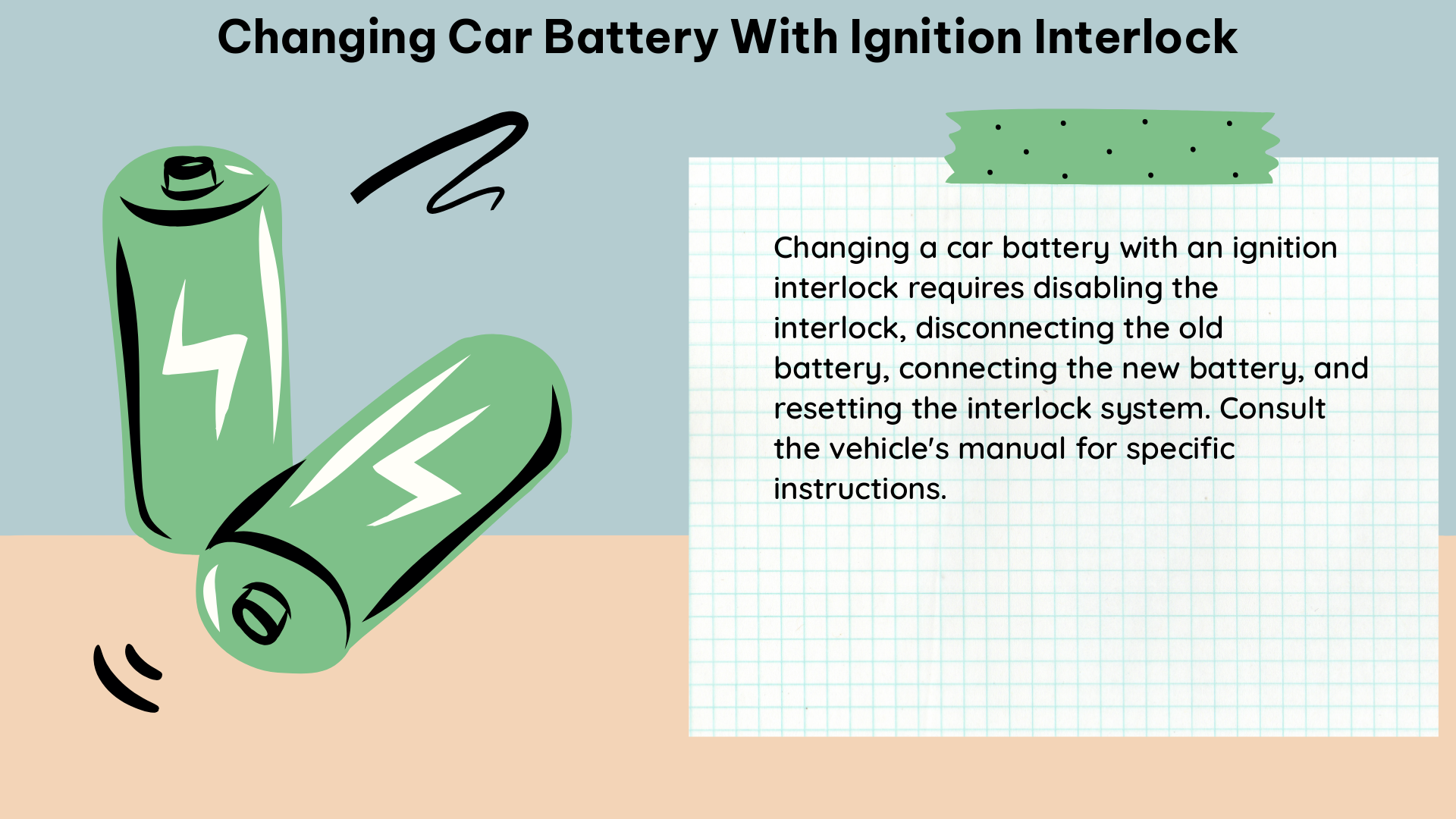Changing a car battery with an ignition interlock device (IID) installed can be a delicate process, as the IID’s power requirements and the battery’s condition must be carefully considered. This comprehensive guide will provide you with the necessary technical details and quantifiable data points to ensure a successful battery replacement while maintaining the proper functioning of your IID.
Understanding the IID’s Power Consumption
The ignition interlock device (IID) installed in your vehicle draws a relatively small amount of power compared to other car accessories. When the car is off, the IID typically consumes around 1/4 of an amp, and when preparing for a breath test, the power draw increases to approximately 1/2 of an amp. This minimal power consumption is essential to consider when replacing the car battery.
Monitoring Battery Voltage

The battery voltage is a critical factor when changing the car battery with an IID. If the battery voltage drops below 12 volts, it could prevent the breath sample from being registered by the IID, leading to potential issues. To check the battery voltage, simply press the “#” sign and then “2” on the IID keypad. This will display the current battery voltage, allowing you to monitor it during the battery replacement process.
Assessing Battery Age and Condition
The age and condition of the car battery play a significant role in its ability to support the IID. Ideally, the battery should be less than three years old to ensure it can provide sufficient power to the IID. If the battery is older than three years, it is recommended to replace it before installing the IID to avoid potential issues.
To assess the battery’s condition, you can perform a load test using a digital multimeter. This test will measure the battery’s ability to maintain a voltage under a simulated load, providing a more accurate assessment of its health. Batteries with a load test result below 12 volts should be replaced.
Monitoring IID Battery Alerts
The IID itself will provide valuable feedback on the car battery’s condition. The IID display will show a low battery indicator when the battery voltage drops to a level that may affect the device’s operation. This alert allows you to take immediate action, such as recharging or replacing the battery, to ensure the IID continues to function properly.
Maintaining Vehicle Health
Keeping the vehicle’s overall health in good condition is crucial when changing the car battery with an IID. It is recommended to start and drive the vehicle at least every 2-3 days to ensure the battery remains charged and the IID continues to operate as intended. This regular use will help prevent the battery from becoming fully discharged, which could lead to issues with the IID.
Technical Specifications and Measurements
To provide a more comprehensive guide, here are some additional technical specifications and measurements related to changing a car battery with an IID:
IID Power Consumption
- Standby mode (car off): 0.25 amps
- Breath test mode: 0.5 amps
Recommended Battery Voltage
- Minimum voltage for IID operation: 12 volts
- Optimal battery voltage range: 12.6 – 13.2 volts
Battery Age and Replacement
- Recommended battery age: Less than 3 years
- Battery load test result: Above 12 volts
IID Battery Alerts
- Low battery indicator threshold: 12 volts
- Battery voltage display resolution: 0.1 volts
Vehicle Maintenance
- Recommended start/drive frequency: Every 2-3 days
- Minimum driving time: 15-20 minutes
By following these technical guidelines and quantifiable data points, you can ensure a successful car battery replacement while maintaining the proper functioning of your ignition interlock device.
References:
- 5 Things You Need to Know About Ignition Interlocks and Car Batteries
- Charging and Changing Your Car Battery with an Interlock
- Will an Ignition Interlock Drain My Car Battery?

The lambdageeks.com Core SME Team is a group of experienced subject matter experts from diverse scientific and technical fields including Physics, Chemistry, Technology,Electronics & Electrical Engineering, Automotive, Mechanical Engineering. Our team collaborates to create high-quality, well-researched articles on a wide range of science and technology topics for the lambdageeks.com website.
All Our Senior SME are having more than 7 Years of experience in the respective fields . They are either Working Industry Professionals or assocaited With different Universities. Refer Our Authors Page to get to know About our Core SMEs.